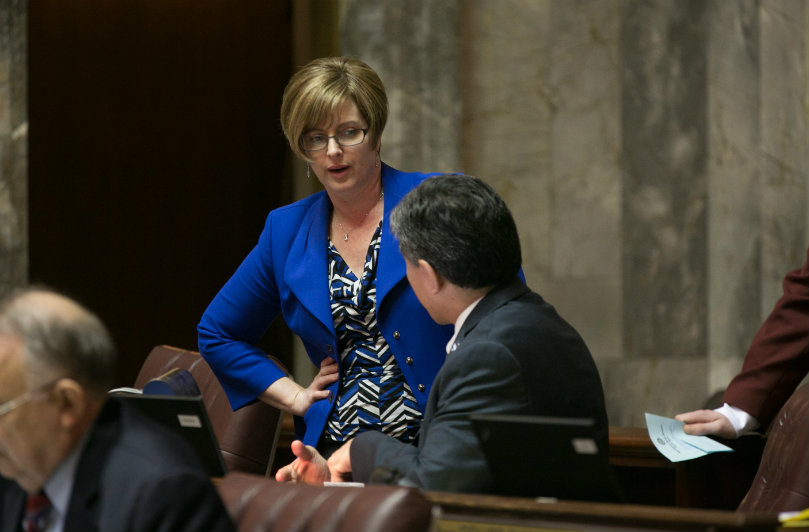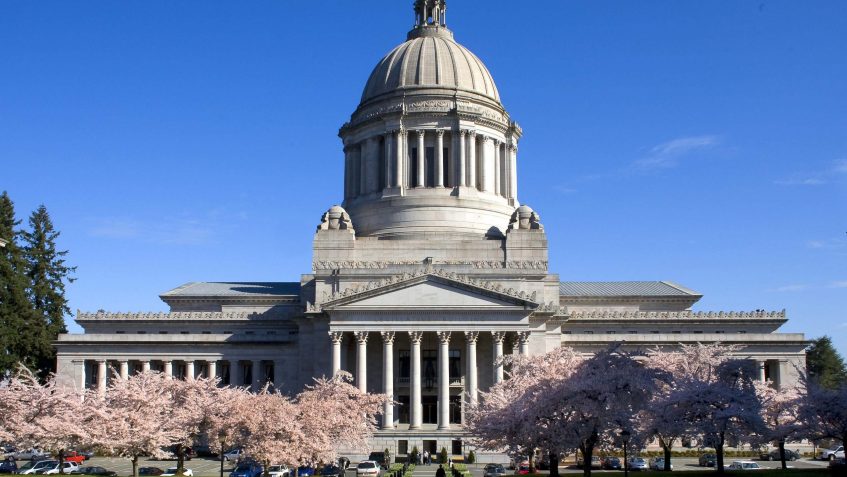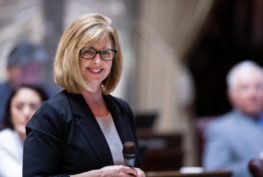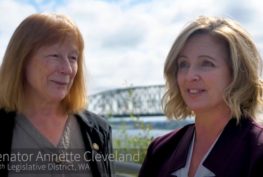Greetings,
The collapse of the Skagit River Bridge up in Mount Vernon two weeks ago provided a sobering reminder of how fragile our transportation infrastructure can be and how much we rely on a safe and effective transportation system.
Nowhere is this more obvious than in our 49th Legislative District, where the Columbia River Crossing project has been debated for over a decade. As newspapers have pointed out in editorials like this, the collapse of the Skagit River Bridge is a wake-up call we can’t afford to ignore.
We’ve known for some time that our transportation system needed improvement. In the American Society of Civil Engineers’ recent annual report card on our nation’s infrastructure, Washington received a grade of “C” for overall physical infrastructure and a “D+” for roads and for mass transit. Spinning our wheels when instead we can, and should, be replacing vulnerable bridges is a recipe for tragedy.
The existing I-5 bridges spanning the Columbia River are nothing if not poster children for the state of our stagnant infrastructure. Like the Skagit River Bridge, the Columbia bridges are rated “functionally obsolete” in the American Society of Civil Engineers’ 2013 Report Card for Washington’s Infrastructure. This means they lack adequate approach alignment, geometry, clearance, structural adequacy or waterway adequacy to meet current traffic needs or standards. In other words, they do not meet today’s basic safety requirements. (You can find a simple glossary of these terms and standards in this post by our friends in the House Democratic Caucus.)
I must admit I was shocked to see the swiftness with which a number of bridge opponents issued public comments so quickly upon the bridge’s collapse — not to voice any concern for public safety but to discourage people from drawing the obvious and logical correlation between the collapse and the tenuous state of the I-5 bridges across the Columbia. The state of our infrastructure, and our efforts to ensure safe roads for the public, should be a far more urgent priority than trying to score political points. I should think that ensuring public safety would be far more important than pursuing a personal bias against light rail.

In a related sense, the Skagit River Bridge collapse highlights not just our need to replace risky structures but also the need to generate the funds to do so. Maintenance of our existing road network has become a major problem for Washington state as we’ve seen an 11-percent increase in our state highway paving backlog and a 32-percent decrease in county road paving.
Our mass transit system has faced large budget cuts in recent years due to dwindling sales tax revenue, and much of our road system still consists of roads and highways built 50 to 60 years ago, according to the American Society of Civil Engineers.
These findings underscore the need for the Legislature to pass a transportation bill this year that would raise revenues to pay for highway construction and maintenance and grant major transit agencies the authority to ask voters in their service areas if they’d be willing to raise local motor vehicle excise taxes to pay for transit service.
In the short term, this revenue would create jobs in construction and related industries. Over the long term, it would enable us to maintain our infrastructure and strengthen our economy to provide a more stable path to prosperity. The bill has strong support, and it’s important that we have the opportunity to vote on this bill before the end of the special session.
In our state’s proud past, earlier generations made similar investments so that you and I and our families could reap the benefits in the form of economic expansion, jobs and other opportunities that helped our middle class thrive and prosper. Today it’s our turn to do our share so that the generations that follow us can enjoy similar opportunities.
Washington state ranks 46th in education spending
US Census Bureau data on state K-12 education spending just released for the 2010-2011 school year shows Washington spends $9,483 per student, which is below the national average of $10,560 per student. When measured relative to each state’s personal income, we ranked 46th in the country. That’s better than the 2009-2010 school year, when we ranked 49th, but it’s still bad. In fact, it’s ‘worse than bad — it’s unacceptable.
I hope there isn’t a single member of the Legislature who is content for our state to be 46th in spending on education, our state’s paramount duty. I’m certainly not okay with it. This data emphasizes the importance of making a major increase in education spending, as we’ve been ordered to do by the state Supreme Court.
Funding education is our moral and constitutional obligation, and we can’t pay for our schools with accounting gimmicks and sleight-of-hand. We need an honest budget that seriously moves the ball toward fulfilling our Supreme Court mandated-obligation to increase K-12 funding by $4.5 billion by 2018. I’m spending this special session working towards negotiating a final budget that makes real progress in funding education. This is our paramount duty and there’s no reason — or excuse — if we fail to pass a final budget that delivers for our kids.
Insurance coverage expands as we implement health care reform
As a part of the federal Affordable Care Act, each state will maintain a health insurance exchange, an online marketplace where consumers who don’t have insurance through their employers can compare and buy health care insurance. Each state will oversee its own marketplace to make sure that plans provide fair and affordable coverage in compliance with federal regulations. Washington’s exchange, called the WAHealthPlanFinder, will begin open enrollment in October 2013, for health insurance plans that will start January 2014.
Insurance companies have recently begun submitting plans to the state insurance commissioner to be eligible for sale through the exchange later this year. While some had previously speculated that state and federal regulations would drive up prices, the plans so far have mostly been about the same or cheaper than those for sale in our current marketplace. Proposed rates still must be approved by the state insurance commissioner.
In cases where prices may increase relative to where they are currently, it may be because coverage is being expanded in the version offered on the exchange. Federal law now requires that all plans include coverage for 10 essential health benefits, which may result in a slightly higher premium for some plans. It also may result in savings to consumers who will experience a more robust plan that covers more health care services, such as expensive prescription drugs, expanded mental health treatment, and maternity care, through decreased out-of-pocket expenses. A plan’s deductible also will affect rates, with higher deductibles usually resulting in slightly lower premiums. Consumers also may see rate adjustments because federal law no longer allows insurance carriers to charge different rates based solely on gender.
To assist consumers with the purchase of health insurance, federal income-based subsidies will be available through the exchange for households earning up to 400 percent of the federal poverty level — about $44,680 for an individual or $92,200 for a family of four.
The Affordable Care Act also does a great deal to protect insurance consumers from being suddenly dropped from their health insurance or denied coverage based on pre-existing conditions. The legislature and multiple state agencies have been working over the past few years to prepare this online insurance marketplace, and I’m looking forward to it being up and running later this year. The exchange will greatly help with the transparency of the costs and benefits of different insurance plans, allowing consumers to do an apples-to-apples comparison while shopping in the exchange. I am looking forward to more Washingtonians being able to find, compare, and enroll in reliable and robust health insurance coverage through the exchange.
Until next time,
![]()




